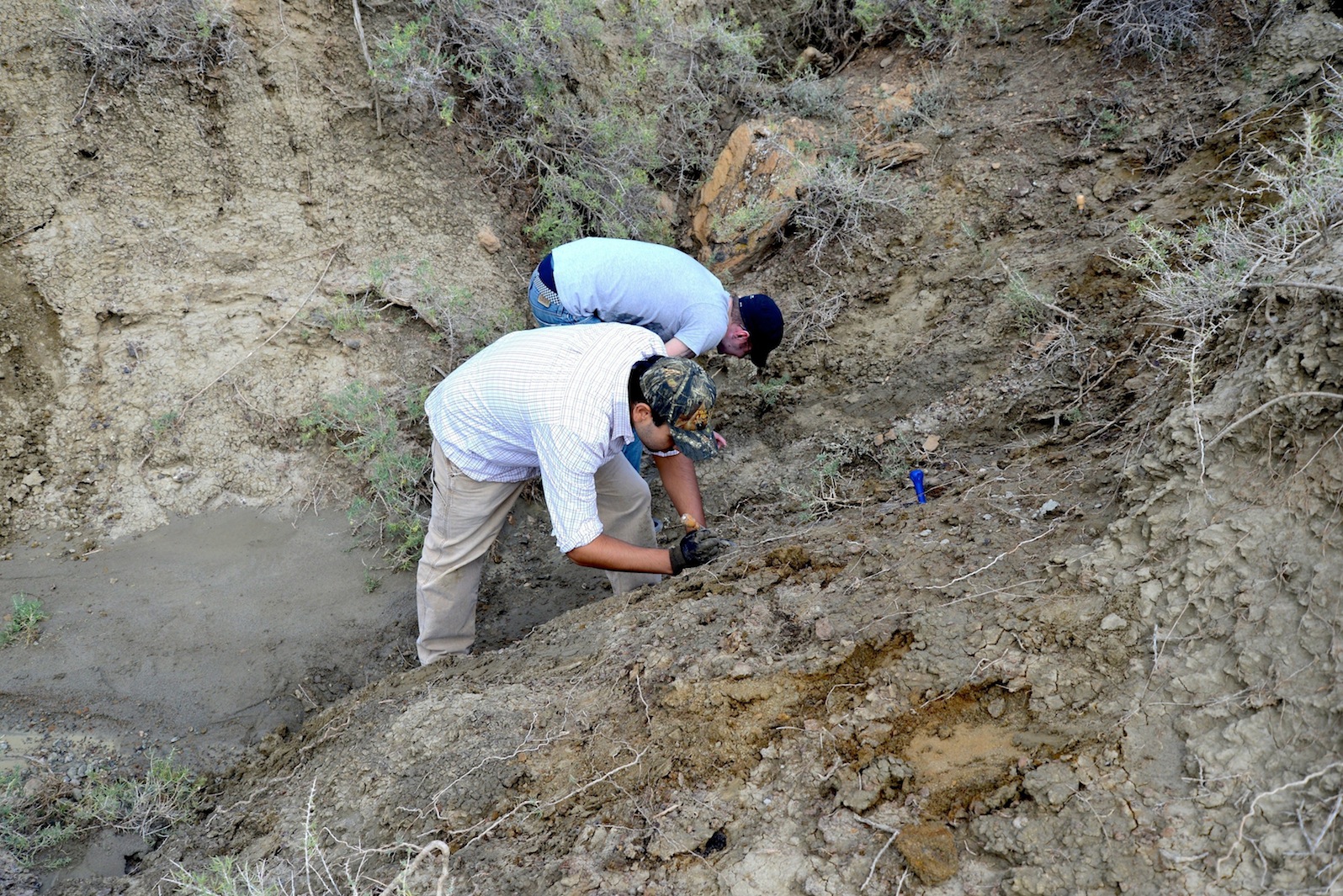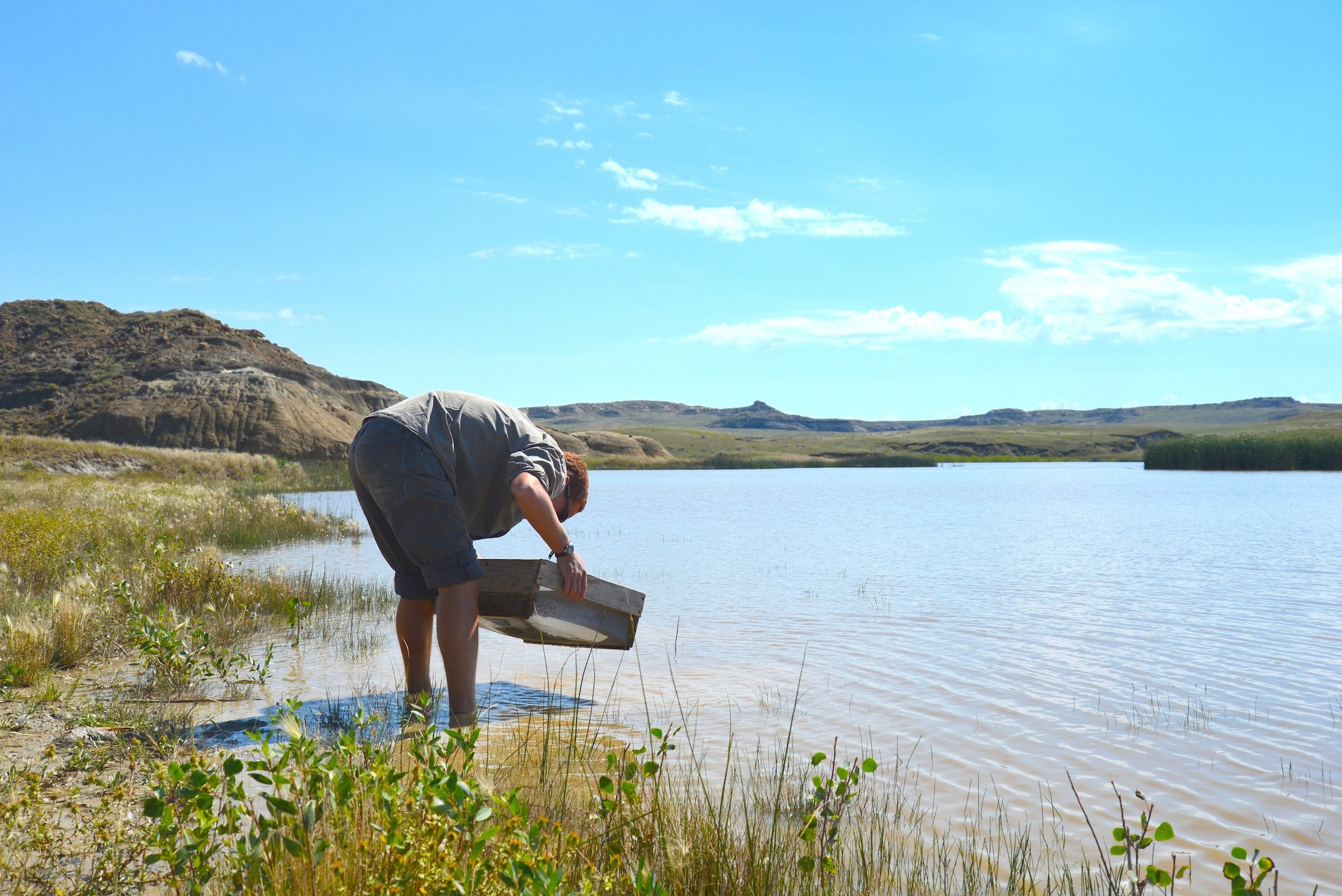|
Fall 2013
The 2013 Annual Astrobiology Workshop
A significant focus of UW Astrobiology's graduate program is to provide our students with opportunities for hands-on interdisciplinary research experiences, and in-the-field learning. Our annual workshops are multi-day educational field trips, and are a centerpiece of the interdisciplinary training in our Program.
We have received overwhelmingly positive feedback from our students and alumni about this component of our curriculum, and many of you have told us that these experiences have been some of the most memorable and valuable aspects of your time in the UWAB program. However, our limited State funding for these workshops means that not all students who are interested in participating in a given field trip are able to do so. This year, we used donations to our Friends of Astrobiology Fund to help support attendance at the workshop. Even a small donation can make a big difference to an individual student, and we are very thankful for your support!
UWAB students Eva Stueeken (ESS) and Meg Smith (ESS) attended this year's workshop, and reported back on their experiences:
Hands-On Paleontology in Hell Creek, Montana
 This September, thirteen graduate students from five departments attended the Astrobiology field workshop in Hell Creek, a fossil-rich region nestled among the ranching country of eastern Montana. Rocks in the Hell Creek region were deposited around 65 million years ago, at the time of the Cretaceous-Paleogene (K-Pg) mass extinction, when all non-avian dinosaurs died out. Furthermore, the K-Pg boundary also directly precedes the first appearance of primates, i.e. the lineage that eventually gave rise to human intelligence. The goal of this trip was thus to learn how external events can alter the course of biological evolution.
This September, thirteen graduate students from five departments attended the Astrobiology field workshop in Hell Creek, a fossil-rich region nestled among the ranching country of eastern Montana. Rocks in the Hell Creek region were deposited around 65 million years ago, at the time of the Cretaceous-Paleogene (K-Pg) mass extinction, when all non-avian dinosaurs died out. Furthermore, the K-Pg boundary also directly precedes the first appearance of primates, i.e. the lineage that eventually gave rise to human intelligence. The goal of this trip was thus to learn how external events can alter the course of biological evolution.
In this almost alien ancient world, the Hell Creek region lay at the edge of a sea that cut through the middle of what is now the continental United States. Turtle shells, crocodiles and dinosaur teeth, fish scales, and small bones are among the most common fossils found in the area. As part of the field workshop, we gained hands-on experience in collecting fossils and learning about the causes and consequences of planet-wide mass extinctions.

The field trip was led by Prof. Roger Buick (Earth & Space Sciences) and Prof. Gregory Wilson (Biology), who introduced us to paleontological field techniques, fossil identification, and the record and importance of mass extinctions in Earth's history. Research into the causes of the K-Pg extinction is still ongoing, but a large asteroid impact off the coast of Mexico and intense volcanism in India were likely key players. Asteroid impacts and volcanism are common phenomena on terrestrial planets in our solar system and by extension, our galaxy, so mass extinctions likely would influence the evolution of complex and intelligent life elsewhere.

Like true paleontologists, our days started early and ended only when our stomachs began to ache for dinner. Each day had a different focus. During the first day we explored the late Cretaceous Hell Creek Formation, which is primarily composed of stream sediments that buried skeletons of reptiles, invertebrates, and small mammals. Astrobiology graduate student Tom Tobin, who joined the group as a TA, gave us an overview of his research on paleotemperature measurements using the isotopic composition of bivalve shells. We collected shells from his original sampling site.

At the second site, Prof. Wilson demonstrated how fossil-rich sediment layers can be detected through careful observations of erosion surfaces. Several of us found dinosaur bones and teeth. In the late afternoon, we got a first view of the K-Pg extinction horizon itself, which is preserved as an iridium-enriched red clay bed. In evening lectures, Roger Buick gave us a perspective of how this relatively thin layer compares to larger impact events in the earlier history of the inner solar system and hence how asteroid bombardment may have affected the origin of life.

On day two, we went upwards from the K-Pg boundary into the Paleogene Tullock Member, which is rich in swamp deposits, including meter-thick beds of coal. Prof. Buick introduced us to the use of plant fossils in paleoclimate reconstructions, and Prof. Wilson showed us how to sift out small mammal fossils by washing sediment samples in a local pond.
On the last day, we visited another Cretaceous site where Prof. Wilson and colleagues had collected large bone fragments of dinosaurs earlier in the summer. We learned how large fossils are excavated and stabilized in the field, and even made some original discoveries of localities rich in fish scales and dinosaur teeth. Perhaps some of our fossil finds will lead to further scientific discoveries about animals and environmental conditions on the Earth during this very tumultuous time. Overall, the numerous fossil finds and discussions about astrobiological implications made this workshop a fantastic experience.
Photos: (From Top to Bottom)
1) Wolf Clifton (Museology) and Brett Morris (Astronomy) excavating the toe bone of a dinosaur.
2) The 2013 Workshop attendees. Last row (left to right): Tom Tobin (ESS), Amit Misra (Astronomy), Chantz Thomas (Chemistry), Matt Koehler (ESS). Middle row: Russell Deitrick (Astronomy), Megan Smith (ESS), Eddie Schwieterman (Astronomy), Paul Kintner (ESS), Brett Morris (Astronomy), Prof. Greg Wilson (Biology), Jon Bapst (ESS). Front row: Eva Stueeken (ESS), Wolf Clifton (Museology), Prof. Roger Buick (ESS), Josh Krissansen-Totton (ESS).
3) Amit Misra (Astronomy) and Russell Deitrick (Astronomy) searching for dinosaur bones on erosion surfaces.
4) Prof. Greg Wilson (ESS) pointing with his finger to the red K-Pg boundary clay.
5) Paul Kintner (ESS) screen-washing sediment samples to concentrate fossils.
Return to Front Page |






